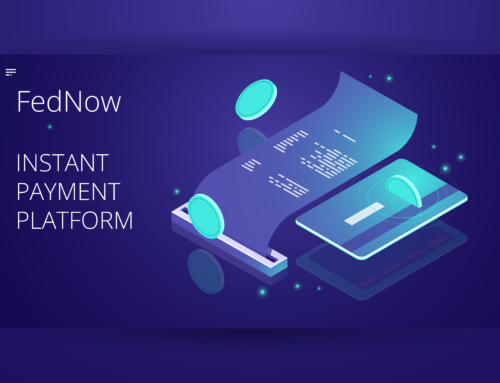Neobanking encompasses financial services offered by digital-only or online-only banks, functioning solely through mobile apps or web platforms. These tech-focused Neobanks strive to provide a smoother and more user-friendly banking experience compared to traditional brick-and-mortar banks.
In recent years, neobanks have rapidly gained popularity globally, appealing to both individual customers and businesses seeking convenient banking solutions. Their rise has also motivated traditional banks to enhance their digital services to keep pace with the changing financial environment and remain competitive.
How do Neobanking works?
Neobanks operate on a digital-first model, relying on technology to deliver their financial services. Here’s how they typically work:
Account opening
Customers can sign up for an account through the neobank’s mobile app or website. The registration process is usually quick and straightforward, with minimal documentation required for identity verification.
Digital onboarding
After completing the registration, customers may need to provide additional information to comply with regulatory requirements. This step ensures that the neobank can verify the customer’s identity and prevent fraudulent activities.
Banking services
Once the account is set up, customers can access a range of banking services through the neobank’s digital platform. These services may include checking and savings accounts, debit cards, payment transfers, bill payments, and more.
User experience
Neobanks focuses heavily on providing excellent user experience. They often offer intuitive interfaces, real-time transaction updates, and personalized financial insights to help customers manage their money effectively.
Innovative features
Neobanks differentiate themselves by offering innovative features and products. These may include automated budgeting tools, savings goal tracking, round-up savings, and investment opportunities.
Integration with fintech services
Many neobanks collaborate with third-party fintech companies to expand their service offerings. For instance, they might provide access to insurance products, investment platforms, or peer-to-peer lending services.
Customer support
Neobanks provides customer support through digital channels like chatbots, email, or in-app messaging. Some also offer phone support during specified hours.

Advantages of Neobanks
Convenience
Neobanks offer seamless and user-friendly digital banking experience. Customers can access their accounts and perform transactions anytime, anywhere, using their smartphones or computers.
Quick account setup
Neobanks typically have a simple and fast account opening process. Customers can complete the registration online without the need for lengthy paperwork or visits to physical branches.
Cost-effective
Operating without physical branches allows neobanks to reduce overhead costs. As a result, they can often offer more competitive or even fee-free banking services, saving customers money.
Innovative features
Neobanks often introduce novel financial tools and features, such as real-time spending insights, automated budgeting, goal tracking, and personalized recommendations.
Accessibility
The newly evolving banks can reach customers in remote or underserved areas where traditional banks might not have a physical presence.
Financial inclusion
Neobanks can help bring banking services to unbanked or underbanked individuals, promoting financial inclusion and enabling them to participate more fully in the economy.
Integration with fintech services
Many neobanks partner with fintech companies to provide additional services like investment options, insurance products, and other financial tools within their platforms.
Challenges for Neobanks in digital landscape
Limited physical presence
The absence of physical branches might be a disadvantage for customers who prefer face-to-face interactions or need in-person assistance with complex financial matters.
Security concerns
While neobanks implement robust security measures, the digital nature of their operations will expose customers to potential cyber threats like hacking or phishing attacks.
Lack of legacy services
Neobanks might not offer certain traditional banking services, such as safety deposit boxes, cashier’s checks, or large cash withdrawals, which could be inconvenient for some customers.
Regulatory challenges
Neobanks must comply with the same regulations as traditional banks, which can be complex and challenging, especially when operating across different jurisdictions.
Reliance on technology
Technical glitches or server outages could disrupt service temporarily, affecting customer access to funds and financial management tools.
Customer trust
Some customers may be hesitant to trust a relatively new and unfamiliar financial institution, especially if it lacks a long-established track record.
Limited product range
Compared to larger banks, neobanks may have a more limited selection of financial products, which might not meet the needs of certain customers with more specialized requirements.
Opportunities for banks to embrace and thrive
Market penetration
Neobanks have the opportunity to reach underserved or unbanked populations, especially in regions where traditional banking services are limited or inaccessible.
Cost efficiency
Operating solely in the digital realm allows these banks to keep overhead costs low compared to brick-and-mortar banks. This, in turn, can lead to more competitive and transparent fee structures.
Global reach
Neobanks are not constrained by physical boundaries, enabling them to serve customers from different countries without the need for establishing physical branches.
Personalization
With access to customer data and advanced analytics, they can offer personalized financial solutions, enhancing customer engagement and loyalty.
Partnerships
These can form partnerships with various fintech companies to broaden their service offerings and create a comprehensive financial ecosystem.
Future scope
The future of neobanking looks promising, as these digital-first financial institutions continue to evolve and gain momentum. Here are some potential future developments:
Regulatory adaptation
As there are growth opportunities, regulatory bodies may develop specific guidelines and regulations tailored to their unique operating models, ensuring consumer protection and financial stability.
AI and automation
Neobanks may increasingly use artificial intelligence and automation to offer more sophisticated financial advice, detect fraud, and improve customer support.
Enhanced security
With the increasing emphasis on data security and privacy, these banks will continue to invest in advanced security measures to protect customer information and prevent cyber threats.
Expansion of services
Neobanks may expand beyond traditional banking services and delve into areas like wealth management, cryptocurrencies, or niche financial products.
Collaboration with big tech
Neobanks might form partnerships with prominent tech companies, leading to the integration of banking services into popular tech platforms, such as social media or e-commerce apps.
Cross-border solutions
The banks may develop solutions to address the complexities of cross-border banking, enabling seamless international transactions and currency exchanges.
The future of neobanking seems promising and transformative, driven by these innovative digital pioneers who are reshaping the financial landscape and catering to the changing demands of customers in an increasingly digital era. These banks provide various benefits, including convenience, cost-effectiveness, and innovative features.
Yet, they are not without challenges, encompassing security apprehensions, regulatory complexities, and a relatively narrower range of services. As the neobanking sector continues to expand and progress, these drawbacks are likely to be addressed, further enhancing the appeal of neobanks for customers seeking modern and flexible banking alternatives.


